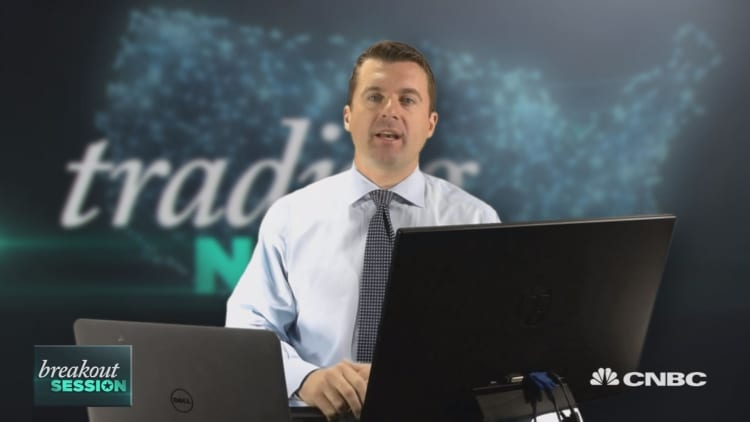
If you've never heard of an Elliott wave, it might be time to read up, as one trader says it is a "useful" indicator that is predicting headwinds for the market rally.
While the and hit new all-time intraday highs Tuesday, Todd Gordon of TradingAnalysis.com says that doesn't change the fact that both major market indexes are facing "resistance."
"We're looking at a pending top in these stock market indexes that we really need to pay attention to," Gordon said Tuesday on CNBC's "Trading Nation."
Elliott wave analysis is based on the theory that financial markets move repeating up and down cycles, the repetition of which allows traders to predict where the market could be heading.
To illustrate how Elliott waves work, Gordon applies it to a chart of the S&P 500. If the S&P were to repeat its past movements, that is moving up and down in the same patterns and by relatively the same amount it has been in the last few months, Gordon believes the index, which closed just below 2,400 on Tuesday, will be stuck in the 2,300 to 2,500 range.
"I think we're going to fall into a sideways correction that should last between 2,500 and 2,300 for several months," he said. "The S&P should have a really hard time to break through 2,500."
That is, Gordon doesn't foresee a drop that would mark a "correction" in price, but rather a period of stagnation that would mark a pause in the market rally.
The same goes for the , which Gordon describes as having "similar resistance" to that of the S&P. In other words, if the Nasdaq 100 were to mirror its movements from the previous few months, it "is facing a wall of resistance between 5,700 and 6,000." The index is currently around 5,670.
Finally, Gordon thinks he can also apply the same principle to the Russell 2000 index. Small caps had been one of the hottest trades leading out of the election, but the Russell 2000 has only risen 2 percent this year. The Elliott wave principle is suggesting that the index "has similar upside resistance ... that will put that multimonth sideways correction into play," according to Gordon.
Since the Elliott waves suggest a neutral-to-bearish outlook for equities, Gordon is adjusting his positions accordingly.
"We'll be watching
All three major indexes had pulled back Tuesday afternoon after rising in morning trade.





